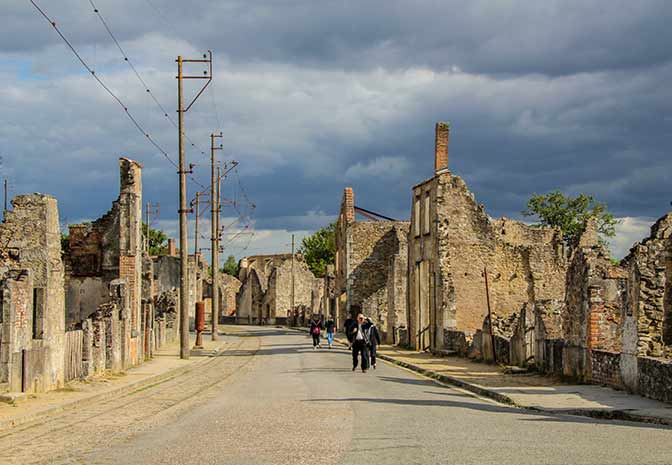France was the largest military power to come under occupation by Germany in World War 2. As such, the country contains many sites relating to the conflict. Visiting these WW2 sites in France by car is educational and moving; a unique opportunity to have the events of this tumultuous period of history brought to life before your eyes.
Many of the most significant World War 2 sites can be included in a wider visit to northern France or Paris. Here, we share how to reach a number of WW2 sites in France by car when you book a ferry to France.
World War II Sites in Paris

German troops occupied Paris from 1939 until 1944. This means that alongside everything else the capital city offers, there are several monuments marking significant events of World War 2.
Arc de Triomphe
Napoleon ordered the construction of the Arc de Triomphe in 1806 to honour the Grand Armée of the Napoleonic wars. The iconic structure also honours all soldiers who have fallen in battle since then.
Underneath the arch lies the French Tomb of the Unknown Soldier – a tribute to the fallen and missing of both World Wars. Take a quiet moment to reflect here as the traffic swirls around Paris above you.
How to drive to Paris from Calais: Follow the A16 directly out of Calais, which runs down via Montreuil, Abbeville and Amiens towards Paris. It will take approximately 3 ½ hours, with Amiens a good place to stop en route. Learn more about the driving route to Paris.
The Palace of Versailles
The treaty of Versailles was the peace treaty that sealed the end of World War I. Leaders signed the document at the Palace of Versailles, which is regarded as one of the most important buildings in European history. Historians agree that the punishing terms set out for Germany contributed to the rise of nationalism, which led to Hitler’s ascension and World War 2.
The Palace of Versailles is an incredible site in its own right, as a hunting lodge transformed into a spectacular palace by the Sun King Louis XIV. Tour its extensive gardens of fountains and mazes, the opulent rooms and the Hall of Mirrors where the treaty was signed – all are truly breathtaking.
How to drive to the Palace of Versailles: Versailles is a 35-minute drive from Paris, perfect for a half-day trip. Leave Paris via the Boulevard Périphérique at the edge of the 16th arrondissement, and take the A13 as far as Hauts-de-Seine Yvelines. Turn onto the D182 here, which joins the D185 to take you into Versailles.
Historic Sites in Normandy

The region of Normandy in North West France saw many important battles during World War II. As a coastal area, its position between Britain and Nazi-occupied France made it the front line of conflict.
Battlefield locations include Donville Manor and the town of Dieppe, which both have museums dedicated to significant events – such as the unsuccessful “Dieppe Raid” of 1942. But perhaps the most sobering sights are coastal graveyards such as Bayeux cemetery. Row upon row of white headstones for Commonwealth soldiers are a stark illustration of war’s devastating impact upon human life.
How to drive from Calais to Normandy: Head for the Bayeux Cemetery, with the Normandy American and La Cambe German cemeteries less than 20km away from there. Take the A16 from Calais as far as Abbeville, then the A28 down to the junction with the A29. Take the A29 west, eventually turning south-west onto the A13. This takes you to the town of Caen, and the N13 out of Caen goes up to the Bayeux Cemetery.
Oradour-sur-Glane (Central France)

Oradour-sur-Glane in central France is one of the most visually impressive memorials in France, as it has been left untouched since the war.
In June 1944 the village of Oradour-sur-Glane was attacked and destroyed. The village has been preserved as a permanent monument. Rubble, overturned furniture, rusting cars and crumbling walls are all that remain.
How to drive to Oradour-sur-Glane from Calais: A day trip to visit Oradour-sur-Glane is ideal if you’re in central France. To reach the town from Calais, take the A16 route to Paris outlined above. Leave Paris on the western side and pick up the A86 or N118 going south. After passing Orsay, take the A10 to Orléans, then the A71 to Viezon followed by the A20 down to Limoges. Oradour-sur-Glane lies to the north-west of Limoges via the N141 and D9 roads.
Ready to drive to these World War II sites in France and explore them for yourself? Book your car ferry crossing from Dover to Calais today.



